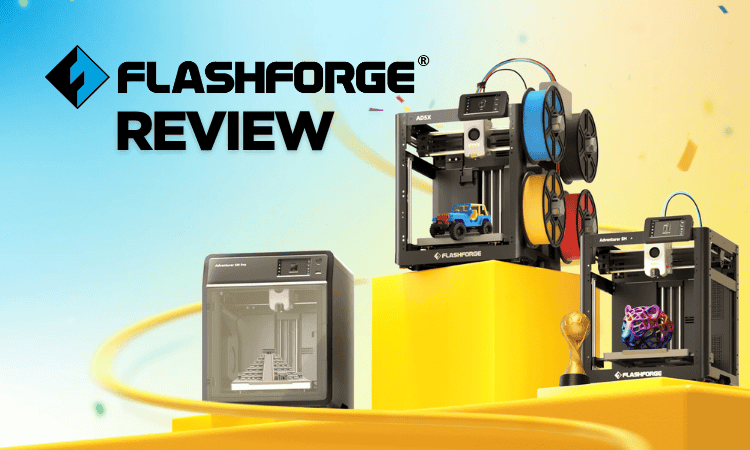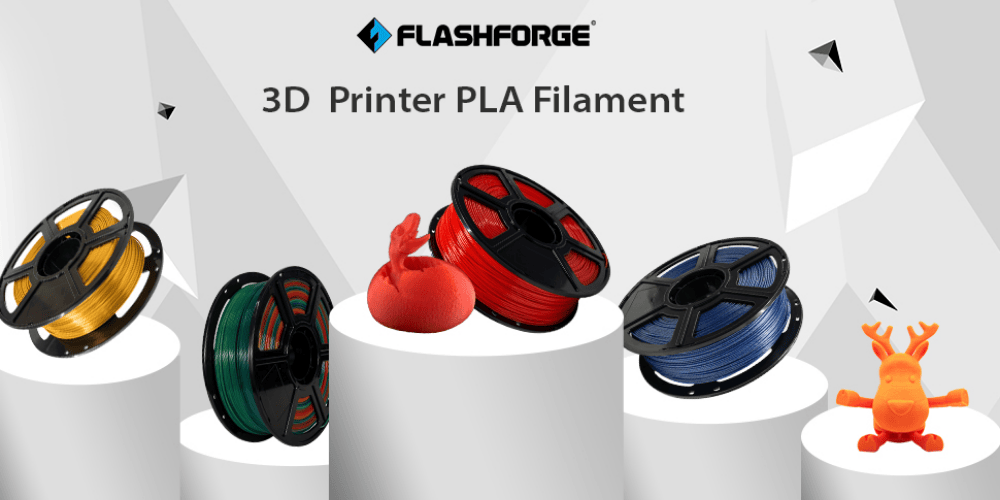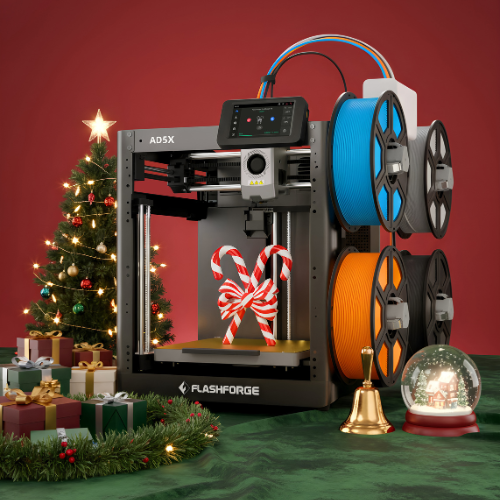
If you’ve ever looked into buying a 3D printer, you’ve probably seen the name FlashForge pop up quite a few times. It’s one of those brands that sits right between beginner and professional, offering solid performance without the high-end industrial price tag. But how good are FlashForge printers really? Let’s dive into everything you should know before buying one, from build quality and ease of use to software, pricing, and real user experience.
About FlashForge:
FlashForge was founded in 2011 in China and quickly became one of the most popular 3D printer manufacturers in the world. The company focuses on making reliable, easy-to-use machines that appeal to beginners, educators, and professionals alike. Unlike some 3D printer brands that only cater to one segment, FlashForge has something for almost everyone.
They design, produce, and sell their own printers, filaments, and accessories. What makes FlashForge interesting is that they manage to combine affordability with decent technology. You’ll find both compact plug-and-play models for first-time users and more advanced machines for small businesses and design studios.
In the U.S., FlashForge has a strong presence through official distributors and its own dedicated online store. It’s easy to get replacement parts, support, and firmware updates, which adds to their trust factor.
Why FlashForge Gained Popularity:
There are many reasons FlashForge became such a talked-about name in the 3D printing world. One big factor is that their machines are easy to set up and start using right away. Many users say that their printers work straight out of the box with minimal calibration, which saves a lot of time.
Another reason is consistency. FlashForge printers might not be the most advanced machines on the market, but they are known for producing steady, repeatable results. For hobbyists, educators, and small business owners, that reliability is a huge advantage.
Also, the brand constantly updates its lineup. Every few years, they improve hardware features, refine the design, and tweak software. So if you buy a FlashForge printer, it doesn’t feel outdated quickly.

Design and Build Quality:
One of the first things you notice about FlashForge printers is how compact and solid they look. Models like the AD5X and AD5M are sleek, enclosed, and surprisingly quiet. The enclosures help maintain a stable temperature inside the printer, which means fewer print failures due to drafts or uneven heating.
Most FlashForge printers are made using strong plastic or metal frames that hold up well over time. The moving parts feel smooth and stable, which gives users more confidence during long prints. Even the entry-level printers come with a professional finish, not something you always get in budget machines.
Ease of Setup and Use:
Setting up a FlashForge printer is generally very simple. Most models arrive fully assembled, with only a few basic steps to get started. The touchscreen controls are intuitive, and the menu layout is clear enough for beginners.
FlashForge also provides its own slicing software called FlashPrint. It’s not the most advanced slicer out there, but it’s user-friendly. You can drag and drop models, adjust print settings, and preview results easily. For more advanced users, it supports external slicers like Cura, which adds flexibility.
Print Quality and Performance:
FlashForge printers are known for delivering consistent results. The layer lines are clean, edges are sharp, and even small details come out well. Most models support layer heights between 0.1 mm to 0.4 mm, allowing users to balance print speed and quality.
The printing speed also varies by model. Entry-level printers are slower but quieter, while advanced machines can handle faster print speeds with industrial-grade precision. The enclosed design of many models helps maintain a stable printing temperature, which is particularly useful when printing with materials like ABS that can warp easily.
Overall, FlashForge offers reliable performance for the price. Whether you’re making miniatures, prototypes, or practical tools, the output is usually smooth and accurate.

Filament Compatibility:
Another strong point is material compatibility. FlashForge printers work with popular filaments like PLA, ABS, PETG, and TPU. Higher-end printers can even print with advanced materials such as carbon fiber and nylon.
While FlashForge sells its own branded filaments, you’re not restricted to using them. Many users prefer third-party filaments for affordability and wider color options. However, some machines might require a bit of tweaking when using non-FlashForge materials, especially in terms of temperature and retraction settings.
One thing to note is that FlashForge’s proprietary spools are sometimes smaller or shaped differently. So, if you use third-party filaments, you may need a spool holder adapter, but that’s a small adjustment for the flexibility you get.
Software and Connectivity:
As mentioned earlier, FlashForge’s own software, FlashPrint, is quite beginner-friendly. It has all the essential features, scaling, support generation, slicing, and previewing. It also receives regular updates that improve stability and add new functions.
Connectivity options are another big plus. Many FlashForge printers support Wi-Fi, USB, and cloud printing. This means you can upload a design from your computer or even print remotely, which is convenient if you’re running a classroom or a small print farm.
Some models also include built-in cameras so you can monitor your prints in real time. Features like these make the printing experience smoother and more modern.
Customer Support and Warranty:
Customer support can be a hit or miss depending on where you live. In the USA, FlashForge has a dedicated support team and distributors that handle replacements or repairs. Many users mention that their support staff responds quickly to emails and offers replacement parts under warranty.
However, there are mixed reviews online. Some users say that communication can be slow or confusing when dealing with complex technical issues. Still, the overall experience is better than many other brands in the same price range.
Most FlashForge printers come with a 1-year warranty, which is standard in the 3D printing industry.
Common Problems Users Face With Flashforge Printers:
Even though FlashForge has a good reputation, no printer is perfect. Some users have reported issues like bed leveling errors, minor calibration problems, or nozzle clogging. Fortunately, most of these can be fixed easily with basic maintenance.
Another common complaint is the FlashPrint software. While it’s simple to use, it sometimes lacks the customization features advanced users want. The slicer may also behave inconsistently with complex models, so some prefer to use Cura or Simplify3D instead.
Lastly, availability of spare parts can occasionally be a challenge outside major markets, so buying from official sellers or trusted online stores is a safer option.
Pros of FlashForge Printers:
- Easy setup and beginner-friendly
- Good print quality for the price
- Durable and stylish design
- Wide filament compatibility
- Quiet operation
- Auto-leveling and touch screen controls
- Excellent for educational and home use
Cons of FlashForge Printers:
- Software can feel limited for advanced users
- Some models have small build volumes
- Filament spools may not fit standard holders
- Customer support varies by region
- Occasional calibration issues
Popular FlashForge Models:
1. FlashForge Adventurer 5X (AD5X)

This model is positioned as a high-speed, multi-color capable printer (CoreXY structure, able to handle multiple filament colours or materials) from FlashForge.
Key features:
- According to reviews, it supports a 4-colour IFS (interchangeable filament system) and can print TPU 95A very well, showing its flexibility.
- It uses a CoreXY motion system and claims high speeds (up to ~600 mm/s travel) in some tests.
- The setup is relatively user friendly according to reviewers.
Strengths:
- Multi-colour and flexible-material capability gives it an edge for creative users who want more than just PLA parts.
- The speed and CoreXY stability mean you get good performance for the cost (in its category).
- The quick-swap nozzle system (new type) is highlighted.
Weaknesses:
- Some users note that multicolour prints still carry the usual challenges (purge, material waste) in multi-filament setups.
- Build volume and material enclosure details may be less refined than industrial machines (depending on your use-case).
Who should buy: If you already have some experience with 3D printing, you want colour or multi-material capability, and you’re chasing good value for advanced features, the AD5X is a strong pick. If you’re brand-new and just doing simple PLA prints, you might find its extra capabilities more than you need.
2. FlashForge Adventurer 5M (AD5M)
This is a more affordable, CoreXY high-speed printer targeted at beginners/enthusiasts wanting a strong machine at a good value.
Key features:
- CoreXY structure, claiming up to ~600 mm/s travel speed and high acceleration.
- Auto bed-levelling, quick-detach nozzles, and user-friendly features.
- Build volume of ~220×220×220 mm in this model.
Strengths:
- Setup is very simple; reviewers praised how quickly one could get printing.
- Good value: You get high-speed CoreXY and direct-drive extruder features at a more accessible price.
- Versatile: Capable of printing PLA, PETG, TPU, and even some composite filaments with the right nozzle/settings.
Who should buy: This is a very good option if you want more than the entry-level printer, want faster prints and better features, but don’t yet need large format or ultra-premium infinite options. Good for hobbyists and semi-serious makers.
3. FlashForge Adventurer 5M Pro (AD5MP)
This is the upgraded “Pro” version of the AD5M, adding enclosure, filtration/hepa, improved features and aimed at more demanding users or educational/pro use-cases.
Key features:
- Enclosed print chamber, air/HEPA filtration, and better isolation from ambient conditions.
- High speed: Some tests show this printer doing prints 5-6× faster than previous generation FlashForge models.
- Automated calibration, vibration compensation, advanced features.
Strengths:
- For those who need faster turnaround, the AD5MP offers serious speed improvements and print quality for its class.
- The enclosed design helps if you print more demanding materials like ABS or in more challenging environments (schools, studios).
- Good for more serious makers, small businesses or educational settings.
Who should buy: If you’re printing more often, need faster speed, want more reliability or print larger/harder materials, or if you’re in an environment like a makerspace or school where the enclosure/filtration matters, this is a strong choice.
4. FlashForge Guider 3 Ultra (G3U):
This is a large-format, professional or prosumer printer from FlashForge—big build volume, dual nozzle, high temps, aimed at serious work.
Key features:
- Very large build volume: One reviewer notes ~330×330×600 mm for single nozzle, ~300×330×600 when using dual nozzles.
- High speed, built with strong materials (CNC-milled parts, large linear rails) and professional features.
- Capable of printing engineering materials (PC, CF-reinforced) under the right conditions.
Strengths:
- If you need large prints, or functional prototypes in higher grade materials, the G3U delivers, very high build size and capability.
- Excellent build quality and mechanical stability; one reviewer said “one of the toughest printers I have ever had the pleasure of working with.”
- Good value in its class: Compared to other industrial machines of similar size/volume, it undercuts many in price.
Who should buy: If you’re a small business, professional designer, maker producing large pieces, or someone who prints high volume/complex parts with demanding materials, the G3U is a compelling choice. If you’re a hobbyist printing standard PLA/PETG on smaller scale, it’s likely overkill.
Who Should Buy FlashForge Printers?
FlashForge printers are ideal for anyone who wants reliable performance without spending thousands of dollars. They’re especially suited for:
- Beginners and hobbyists who want to explore 3D printing with minimal setup.
- Schools and colleges that need dependable machines for educational purposes.
- Small businesses or startups that require affordable prototyping tools.
- Makers and designers who want consistent print quality and easy maintenance.
If you’re a professional manufacturer or need ultra-precise industrial parts, you might find FlashForge’s mid-range models limiting. But for most users, they strike the right balance between cost and capability.

Price and Value for Money:
FlashForge printers generally fall in the mid-range category. Prices vary depending on features, you can find entry-level models around $300 to $500, and professional ones ranging up to $3,000 or more.
For what they offer, reliable hardware, good print quality, and long-term usability, the price feels justified. The printers are durable and rarely need major repairs if maintained properly.
And here’s a tip, if you’re planning to buy one, always look for a FlashForge coupon before checking out. Many USA retailers and online stores run seasonal discounts or bundle deals that can save you a good amount on your purchase.
You can use FlashForge discount code to save up to 45% OFF on 3D printers. You can also get 50% OFF on Filaments.
Final Verdict: Should You Buy FlashForge?
FlashForge has earned its reputation as a trusted and dependable 3D printer brand. It offers a balanced mix of affordability, build quality, and ease of use, making it suitable for a wide range of users.
If you’re new to 3D printing or simply want a machine that “just works,” FlashForge is one of the safest bets. The Adventurer series is perfect for beginners, while the Creator and Guider series are great for professionals or small business needs.
Yes, there are minor issues like limited slicer software and inconsistent support in some areas, but overall, the positives easily outweigh the negatives.
In short, FlashForge gives you a smooth entry into the world of 3D printing without breaking your budget. It’s a brand that focuses on simplicity, performance, and value, everything most users look for when buying their first or next 3D printer.
